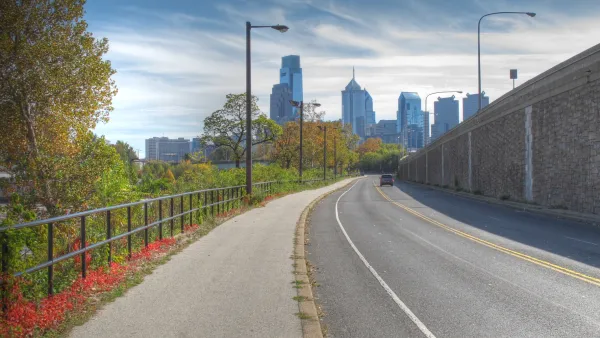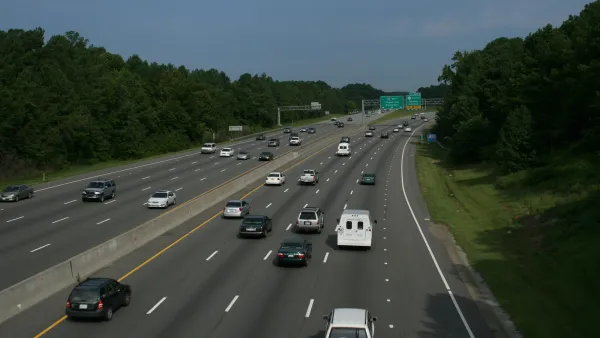It's been 21 years (and counting) since D.C. developed plans to build the Metropolitan Branch Trail's eight mile northern segment. The delayed project threatens the city's goal of increasing the proportion of biking and walking trips to 25 percent.
"Twenty-one years after plans were first devised -- and seven years after D.C.'s bike master plan called for its completion -- a planned eight mile bicycling and walking trail that may eventually connect Union Station and Silver Spring is still years away from being finished," reports Martin DiCaro.
Though the Metropolitan Branch Trail was the scene of an unprovoked attack this summer, it remains a popular bike route and a centerpiece of efforts to increase biking and walking mode share within the city.
"The issue is not money," explains DiCaro. "When construction eventually begins, DDOT has funding programmed into its budget to finish the eight-foot wide trail within Washington, whose completed southern segment (1.5 miles from Union Station to the Brookland neighborhood) sees 15,000 bicyclists and pedestrians per month. The biggest unresolved issue remains property conflicts near the Fort Totten Metro station: the Met Branch Trail must navigate a municipal trash transfer station, privately-owned railroad tracks and a concrete factory, onto National Park Service property and around land owned by Metro."
FULL STORY: First Envisioned 21 Years Ago, a D.C. Biking and Walking Path Remains Unfinished

National Parks Layoffs Will Cause Communities to Lose Billions
Thousands of essential park workers were laid off this week, just before the busy spring break season.

Retro-silient?: America’s First “Eco-burb,” The Woodlands Turns 50
A master-planned community north of Houston offers lessons on green infrastructure and resilient design, but falls short of its founder’s lofty affordability and walkability goals.

Delivering for America Plan Will Downgrade Mail Service in at Least 49.5 Percent of Zip Codes
Republican and Democrat lawmakers criticize the plan for its disproportionate negative impact on rural communities.

Test News Post 1
This is a summary

Test News Headline 46
Test for the image on the front page.

Balancing Bombs and Butterflies: How the National Guard Protects a Rare Species
The National Guard at Fort Indiantown Gap uses GIS technology and land management strategies to balance military training with conservation efforts, ensuring the survival of the rare eastern regal fritillary butterfly.
Urban Design for Planners 1: Software Tools
This six-course series explores essential urban design concepts using open source software and equips planners with the tools they need to participate fully in the urban design process.
Planning for Universal Design
Learn the tools for implementing Universal Design in planning regulations.
EMC Planning Group, Inc.
Planetizen
Planetizen
Mpact (formerly Rail~Volution)
Great Falls Development Authority, Inc.
HUDs Office of Policy Development and Research
NYU Wagner Graduate School of Public Service




























